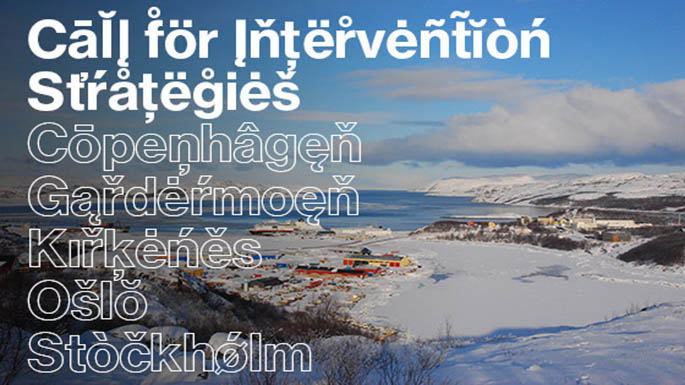Submission: November 23, 2015
Registration: November 23, 2015
Language: English
Location: 5 sites in Nordic region
Prizes: NOK 150 000 – for each intervention strategy.
Type: Open
The Oslo Architecture Triennale 2016: After Belonging invites architects and other professionals from around the world to engage in a debate concerning our changing condition of belonging and the contemporary transformation of residence. This open, international call seeks intervention strategies for five different sites located in the Nordic region. One intervention strategy will be selected for each site and will be developed over one year. The selected interventions will be displayed at the National Museum—Architecture as part of the Triennale programme.
This is After Belonging
With a stranger sleeping on your couch; inside the boxes at the storage facility; surrounded by the information you share in the cloud; after clearing customs at the airport; where your passport allows you to reside. Being at home entails different definitions nowadays, both within domestic settings and in the spaces defined by national boundaries under contemporary regimes of circulation.
The 2016 Oslo Architecture Triennale designs the objects, spaces, and territories for a transforming condition of belonging. Global circulation of people, information, and goods has destabilized what we understand by residence, questioning spatial permanence, property, and identity—a crisis of belonging. Circulation brings greater accessibility to ever-new commodities and further geographies. But, simultaneously, circulation also promotes growing inequalities for large groups, kept in precarious states of transit. After Belonging examines both our attachment to places and collectivities—Where do we belong?—as well as our relation to the objects we own, share, and exchange—How do we manage our belongings?
The Oslo Architecture Triennale 2016 is divided into two parts:
— A triennale On Residence, in which to collectively analyze the spatial conditions that shape our ways of staying in transit and the definition of our contemporary spaces of residence.
— A triennale In Residence, in which international architects and professionals concerned with the built environment will engage in local collaborations in Oslo, the Nordic region, and around the globe, to intervene in the transformation of residence.
How can different agents involved in the built environment address the ways we stay in transit? How can architects intervene in the reconfiguration of the contemporary residence?
THE LIST OF SITES INCLUDES:
- Asylum and Shelter Provision in Torshov,
- Oslo Border Definition in Gardermoen,
- Oslo Resource Negotiations in Kirkenes,
- Transnational Neighborhoods in Tensta,
- Stockholm Home Sharing Platforms in Copenhagen
These sites, as nodes within wider networks, encapsulate questions associated with the global transformation of belonging. Interventions should speculate on the architectures as- sociated to the particularities of each site, and can range from spatial strategies, typologi- cal variations, and material prototypes to digital platforms and legal propositions, among many others. They can be developed as built structures, 1:1 tests, scale models, and representations for public debate.
One intervention strategy will be selected for each site and will be developed over one year, from the announcement of results in January 2016, to the closing of the Triennale in December 2016. The selected interventions will be displayed at the “After Belonging: In Residence” exhibition in the National Museum—Architecture in Oslo. They will also be discussed in a public event throughout the Triennale, and included in a publication to be released in 2017.
The In Residence program seeks to engage with specific sites, including their opportuni- ties and problematics. The intervention strategies should define the protocols to develop this engagement, as well as ways to incorporate local agents and audiences.
Proposals should include:
- A description of the INTERVENTION [5 DIN-A3 of graphic material with a maxi- mum of 1200-word text]. Descriptions should consider the goals and methods of evaluation of the intervention.
- A description of a year-long WORK PROTOCOL for the implementation of the in- tervention [2 DIN-A3 with maximum of 800-word text and graphic material]. Work protocols could range from participatory methods, public events, workshops or inter- views, the design of physical structures, digital applications or cartographies, among others. Participants can propose to collaborate with institutions, engage with local populations, or to work within the domains of offices or archives
- A CALENDAR for the development of the work protocol [1 DIN A-3].
- ABUDGET[1DIN A-3]. Budgets should include the allocation off undsprovided by the Triennale, as well as the extra resources expected for the development of the project, ifneeded. This could include a list of the institutions that will be contacted for this addi- tional funding. Letters of interest from the supporting institutions might be added, when possible.
5. A description of the candidate’s PROFILE [2 DIN A-3]. Candidate’s profile should in- clude a brief CV and a selection of work samples, clearly specifying the candidate’s role in the work. This should also contain full contact information: name of the proposal, full name, address, e-mail and telephone number from the contact person.
FEE
There is no entry fee and no purchase necessary to enter this call for intervention strategies.








